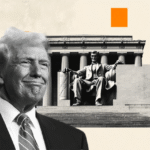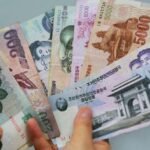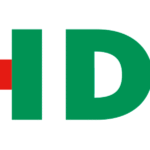We spoke with Trivedi about the team’s forecasts, what might break the US dollar out of its recent trading range, and how the US election in November may filter through the currency.
What is the outlook for the US dollar for the next 12 months?
The dollar has traded in a strong and tight range through the first five months of the year. Looking forward to the next 12 months, we think there are a number of factors that will keep the US dollar stronger for longer. Chief among those reasons is the strength of the US economy. Despite high interest rates, the US economy is doing pretty well, supporting US stocks. And the rate cuts that we are likely to see within the next 12 months should not erode the yield on dollar bonds too far either. Better growth or asset market returns in the rest of the world are the main channel for a weaker US dollar, but there are also some scenarios that could push the dollar even stronger than it is now.
Overall, we will continue to live in a strong US dollar world with a number of risk factors that should support the currency. Any erosion in the dollar’s strong valuation will likely be gradual.
Is there anything on the horizon that could cause the dollar to swing sharply lower or higher?
Typically, when we see big moves in the dollar in one direction or another, it’s because we see quite significant macro or policy divergence, or divergence in economic conditions that is then reflected in monetary policy. Capital flows shift from one asset market to another, from equities and fixed-income, when we see divergent data reports over time.
Back in March and April, there was some suggestion that we could see that kind of divergence when the outlook for US growth and inflation was looking stronger than that of Europe and China. But things have evened out and what we’ve seen over the last few months is a much more convergent world — with activity softening a bit in the US, activity picking up in Europe, and China showing better data and more urgency around policy moves to support some of its deep-rooted problems. So overall, we’re seeing more convergence, and that convergence has kept the dollar and other major currencies in a relatively tight range.
Are there any countries in which that convergence hasn’t born out?
Yes, it’s an important point to consider that there are a few places in the world where we see quite a bit of divergence. One prominent example is Japan. The real rate differential (the difference between inflation-adjusted interest rates) between the US and Japan is quite wide. And therefore there has been a lot of attention on the dollar-yen trading and volatility. Although even in this case, what we’re seeing is that policymakers in Japan seem to have a limited appetite for that kind of divergence, and they have intervened to keep a lid on the dollar. Still, given the divergence in real rates, my colleagues expect the yen to remain weak for months to come. In China, as well, policymakers tightly manage the currency, and while we have seen some better data points recently, the structural economic challenges in contrast to the US continue to pressure the currency.
Has the broad convergence dimmed interest in carry trade transactions?
Actually, there is a fair amount of interest in the carry trade right now. High US rates mean it’s probably not the most ideal environment for earning carry — it’s often described as picking up pennies in front of a steam roller. But, in a world of limited policy divergence where we see the dollar trade in a tight range and FX volatility is relatively low, we have several clients interested in earning a bit of carry while they wait for bigger trending moves. There are a range of flavors for how to get carry, depending on an investor’s appetite for risk. We’re seeing some venture into the riskier part of the carry complex, what I call high-octane trades, in places like Turkey or Egypt. And then there are more conventional carry trade opportunities in places like India or Mexico.
What about the Federal Reserve and interest rate policy?
What could cause the dollar to break out of its tight range are clearer signs of a macro divergence. Say, for example, that the Bank of England and ECB cut rates later this year but the Fed holds off and defers any cuts because its data set is less cooperative. That’s a scenario that could break us out of recent ranges and push the dollar even stronger than it is now and in our forecasts.
Are there other risk factors that could unwind the convergence and lead to swings in the dollar?
Of course, the health of the US economy is all important, but it appears to be humming along at a solid rate. And then there’s the US election. It’s a potential risk factor in that its outcome could result in more fiscal spending or higher tariffs on specific countries, whether on China or across the board. Those are both events and factors that could push the dollar out of its recent range.
As for the US election, recent history would suggest that how expansionary a fiscal outcome you get will have as much to do with whether there’s a clean sweep by a party in Congress, not just which party wins the presidency. In that situation you’re more likely to be able to pass more expansionary fiscal measures that in turn can lead to dollar strength.
In a divided government, there’s less ability to pass a lot of meaningful fiscal measures. It’s fair to say that for this particular election we’ll see trade policies and fiscal expansion policies being debated and potentially implemented. As a result of that, an even stronger dollar is a real possibility and a risk for the rest of the world to manage.
This article is being provided for educational purposes only. The information contained in this article does not constitute a recommendation from any Goldman Sachs entity to the recipient, and Goldman Sachs is not providing any financial, economic, legal, investment, accounting, or tax advice through this article or to its recipient. Neither Goldman Sachs nor any of its affiliates makes any representation or warranty, express or implied, as to the accuracy or completeness of the statements or any information contained in this article and any liability therefore (including in respect of direct, indirect, or consequential loss or damage) is expressly disclaimed.





















